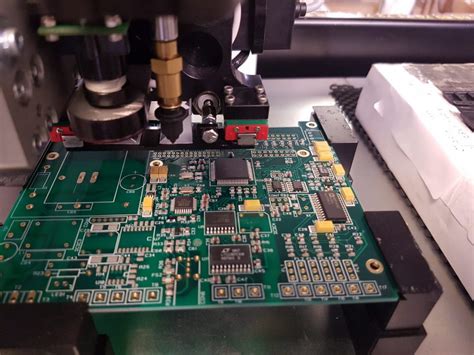High-frequency microwave radio frequency PCB board immersion gold process flow
The advantage of high-frequency/microwave/radio frequency PCB board immersion gold process is that the color deposited on the surface is very stable, the brightness is very good, the coating is very flat, and the solderability is very good when printing circuits. The thickness of gold in high-frequency microwave radio frequency PCB board immersion gold is generally 1-3Uinch, so the gold thickness made by immersion gold surface treatment is generally thicker, so immersion gold surface treatment is widely used in high-frequency microwave radio frequency PCB boards such as keypads, gold fingers, and card boards, because gold has strong conductivity, good oxidation resistance, and long service life.

High-frequency microwave radio frequency PCB board immersion gold process flow:
- Process introduction: The purpose of the immersion gold process is to deposit a nickel-gold coating with stable color, good brightness, flat coating, and good solderability on the surface of the printed circuit. It can be basically divided into four stages: pre-treatment (degreasing, micro-etching, activation, post-immersion), nickel immersion, gold immersion, and post-treatment (waste gold washing, DI washing, and drying).
- Pretreatment: The pretreatment of immersion gold generally has the following steps: degreasing (30% AD-482), microetching (60g/InaPS, 2% H2SO4), activation (10% Act-354-2), and post-immersion (1% H2S04). To remove the copper surface oxide, and immerse palladium on the copper surface to serve as the activation center for immersion nickel. If any of the links is not handled properly, it will affect the subsequent immersion of nickel and immersion gold, and lead to batch scrapping. During the production process, various **** must be analyzed and supplemented regularly and controlled within the required range. For example, the more important ones are: the microetching rate should be controlled at “25U-40U”, and a new cylinder must be opened when the activated **** copper content is greater than 800PPM. The cleaning and maintenance of **** cylinders also have a greater impact on the quality of high-frequency microwave radio frequency PCB boards. The degreasing cylinder, microetching cylinder, and post-immersion cylinder should be replaced weekly, and each water washing cylinder should also be cleaned weekly.
- Nickel deposition: and stabilizer. Since chemical nickel has strict requirements on the range of **** components, it must be analyzed and tested twice per shift during the production process, and Ni? reducing agent should be added according to the bare copper area of the production board or experience. When adding materials, the principle of small amounts and multiple dispersed additions should be followed to prevent local plating solution from reacting violently, resulting in accelerated aging of the plating solution. The pH value and plating solution temperature have a greater impact on nickel thickness. The **** temperature of nickel should be controlled at 85℃-90℃. When the pH is 5.3-5.7 and the nickel cylinder is not in production, the temperature of the nickel cylinder should be reduced to about 70℃ to slow down the aging of the plating solution. The chemical nickel plating solution is sensitive to impurities, and many chemical components are harmful to chemical nickel. They can be divided into the following categories: Inhibitors: including Pb.Sn..Hg.Ti.Bi (heavy metals with low melting points).
- High-frequency microwave radio frequency PCB board immersion gold: The immersion gold process is a kind of immersion gold process. The main components of the immersion gold cylinder are Au (1.5-3.5g/l) and the binder is (Ec0.06-0.16mol/L). It can replace the pure gold plating on the nickel-phosphorus alloy layer, making the coating smooth and finely crystallized. The pH value of the plating solution is generally between 4-5, and the temperature is controlled at 85-90 degrees Celsius.
- Post-processing: Post-processing is also an important link. For printed circuit boards, it generally includes: waste gold washing, DI washing, drying and other steps. If conditions permit, the immersion gold board can be further washed and dried with a horizontal washing machine. The horizontal washing machine can be set up in the order of **** washing (10% sulfuric acid, 30g/L hydrogen peroxide), high-pressure DI washing (30-50PSI), DI washing, drying, and drying to completely remove **** and water stains in the holes and on the surface of the printed circuit board, and obtain a high-frequency microwave radio frequency PCB board with uniform coating and good brightness.







